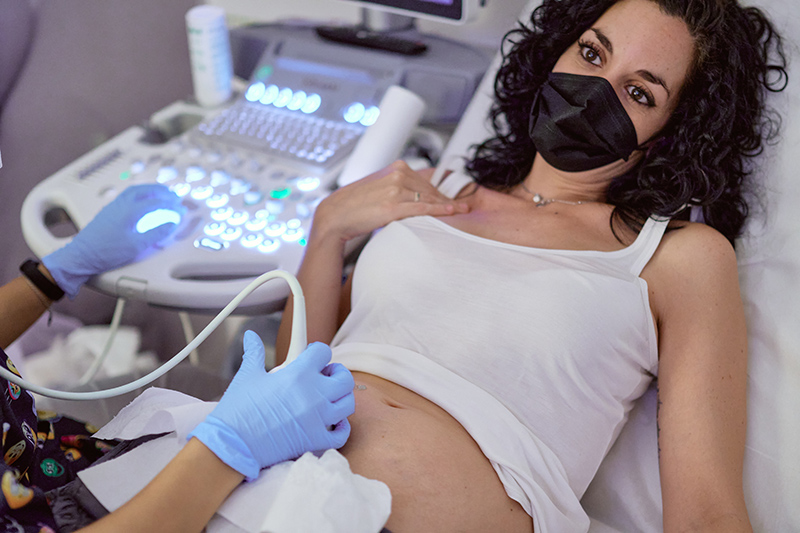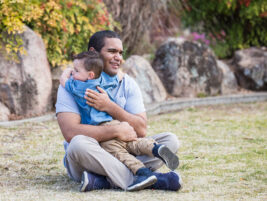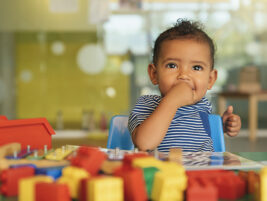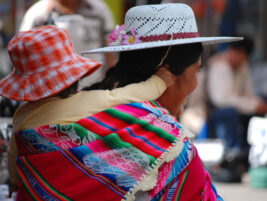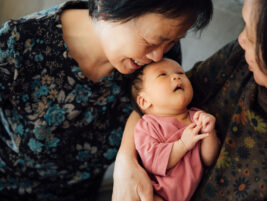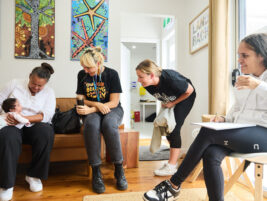In March 2020 the SARS-CoV-2 pandemic took over our thinking, transforming the way we live and know the world. The imminence of a disaster scenario, such as the one observed in European neighbouring countries like Italy and Spain, forced the Portuguese Government to declare the State of National Emergency with the implementation of exceptional measures, such as the closure of national borders, curfews and the closure of schools and non-essential trade.
At the hospital level, as Child and Adolescent Psychiatry (CAP) residents under training in Centro de Estudos do Bebé e da Criança, an early childhood unit affiliated with the main Portuguese paediatric hospital, we witnessed the imposition of restrictions that immediately forced the restructuring of non-urgent care activity, with telemedicine becoming the new way of providing non-urgent consultations (Martins Halpern et al., 2020).
With the desire to play a more active and direct role in the fight against the pandemic, despite continuing our infant mental health clinical activity as CAP residents, we voluntarily joined, in April and May 2020, a Testing Centre (TC) to carry out SARS-CoV-2 tests in one of the capital’s reference hospitals for the care of adult COVID 19 patients. In this article, we propose a reflection on our work experience at a COVID 19 TC, in the middle of the pandemic, as a very challenging experience compared to our usual clinical practice.
CAP Residents in COVID 19 Testing Centre
The TC shifts were organised into periods of 4 hours, with one infectious disease resident or specialist and two residents from other specialities scheduled for each shift. Our work consisted of compiling a medical history directed to the presence of symptoms and relevant antecedents and carrying out the procedure of collecting oral and nasopharyngeal swabs to test for SARS-CoV-2.
We felt that this experience was inwardly enriching, not only because of the possibility of observing in loco very primary reactions of the tested population but also because it allowed us to be spectators of our own emotions, putting us in a position closer to the patients, in the shared experience of such a threatening external reality.
It is interesting to reflect on how our brief contact with the patients, limited to the time spent performing the test, allowed us to identify our defensive movements of denial of reality, somatisation, expressions of anger and irritability, alongside the projection of fears and anxieties on the technicians (“quickly, I can no longer stand being here”) and feelings of great vulnerability and gratitude, experiences that have contributed to our better understanding of the nature of human behaviour.
In us, fear, anguish and a sense of ambivalence about the future stood out, in an atmosphere of pandemic climate fearful of the invisible and still little known “enemy”. These feelings placed us in a permanent state of alert, in the face of all the potential risks of contamination, and we were confronted with the need to comply with various routines and rituals related to the usage of personal protective equipment and to take extreme care in cleaning and disinfection. This allowed us to better perceive the importance that the predictability of routines represents for a greater internal sense of security, which is something that we so often work on in the cases we follow in our specialty.
As CAP residents, it was very challenging, and sometimes equally distressing, to experience the contrast between our usual clinical intervention, a practice that favours time, relationships, continuity of care, and the demand for speed and objectivity of the work in the TC. However, in a place where steamed-up glasses made eye contact difficult and protective equipment left us undistinguishable, the power of the word took on, perhaps, a new significance. We felt that, despite the brevity of the contact, the possibility for the patients to find a professional available to listen to their fears and concerns, in an attitude of understanding and validating them, proved to be differentiating and reassuring.
We were impressed by the story of a young postpartum woman, born in Nepal, having lived in Portugal for only 5 months, who, in compliance with the first national protocol for postpartum women infected with the SARS-CoV-2 virus (DGS, 2020), was separated from her baby after birth. Already asymptomatic and without any support apart from her husband, who was also positive, she repeated the test for the eighth time in just eleven days, as two consecutive negative tests were required for her to finally meet her baby, who had remained in the maternity hospital since the birth.
We were concerned by the coldness of the contingency plans initially implemented, which we felt disregarded basic measures to promote maternal-foetal mental health. Being able to feel so closely the impact of these measures motivated us to file a complaint to the Ombudsman, as an initiative for the protection of children’s mental health. At the same time, a study (Figueiredo et al., 2020) was being carried out in our unit that proved the negative impact of these and other measures on the mental health of pregnant women, the results of which contributed to the revision and modification of these practices. Later, a new standard was issued, which recommended the right for the mother to be accompanied by the father during childbirth, the right for the mother to remain close to her newborn and the right to breastfeed.
Closing reflection
We believe that our collaboration in the TC allowed, not only the reduction of the number of shifts of colleagues with other frontline functions but also a unique learning opportunity regarding the reorganisation of services and the role of mental health professionals in a disaster situation, including advocating for families and their baby’s wellbeing while also acknowledging the environment of the pandemic.
It was with great pride that we witnessed the ability to adapt, solve problems, and share knowledge, regardless of each person’s qualifications, which made it possible to organise in a short space of time the necessary response to meet the needs of the population, in a true ethical spirit of unity and mutual help.
References
Martins Halpern, C., Alves, M., Pires, S., Caldeira da Silva, P. (2020). Covid-19 Confinement and Babies: Video-Call-Based Developmental and Mental Health Approach. Perspectives in Infant Mental Health: The Voices of COVID-19, 28 (3), 30-33.
DGS. (2020) Orientação sobre gravidez e parto, from https://covid19.min-saude.pt/dgs-publica-orientacao-sobre-gravidez-e-parto/
Figueiredo, P. R. et al. (2020). Covid-19 and Mental Health in Pregnancy: A Cross-sectional Study on Depression, Anxiety, and Stress among Portuguese Women. Perspectives in Infant Mental Health: The Voices of COVID-19, 28 (3), 6-9.
Authors
Vaz Pinto, Sofia,
Child and Adolescent Psychiatry Resident,
Hospital Dona Estefânia, Centro Hospitalar Universitário de Lisboa Central, Lisbon, Portugal
Garcia Ribeiro, Catarina,
Child and Adolescent Psychiatry Resident,
Hospital Dona Estefânia, Centro Hospitalar Universitário de Lisboa Central, Lisbon, Portugal
Filipe da Mata, Mónica,
Child and Adolescent Psychiatry Resident,
Hospital Dona Estefânia, Centro Hospitalar Universitário de Lisboa Central, Lisbon, Portugal
Pereira Alves, Mariana,
Child and Adolescent Psychiatry Resident,
Hospital Dona Estefânia, Centro Hospitalar Universitário de Lisboa Central, Lisbon, Portugal
Araújo Duarte, Nuno,
Child and Adolescent Psychiatry Resident,
Hospital Dona Estefânia, Centro Hospitalar Universitário de Lisboa Central, Lisbon, Portugal
Ferro Rodrigues, Madalena,
Child and Adolescent Psychiatry Resident,
Hospital Dona Estefânia, Centro Hospitalar Universitário de Lisboa Central, Lisbon, Portugal
Martins Halpern, Cristina,
Neuropediatrician,
Centro de Estudos do Bebé e da Criança, Hospital Dona Estefânia, Centro Hospitalar Universitário de Lisboa Central, Lisboa, Portugal
Caldeira da Silva, Pedro,
Assistant Senior Graduated of Child and Adolescent Psychiatry, Chief of Child and Adolescent Psychiatry,
Centro de Estudos do Bebé e da Criança, Hospital Dona Estefânia, Centro Hospitalar Universitário de Lisboa Central, Lisboa


